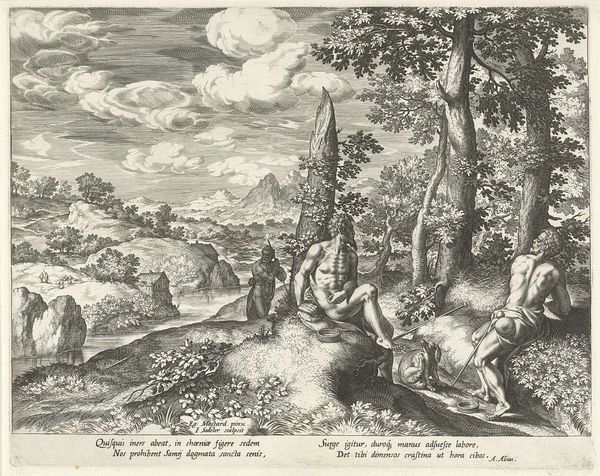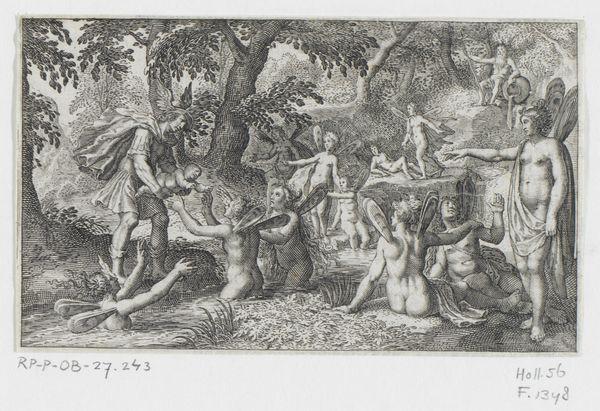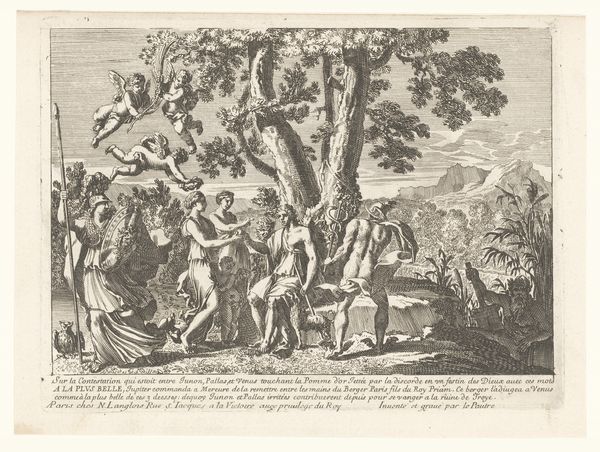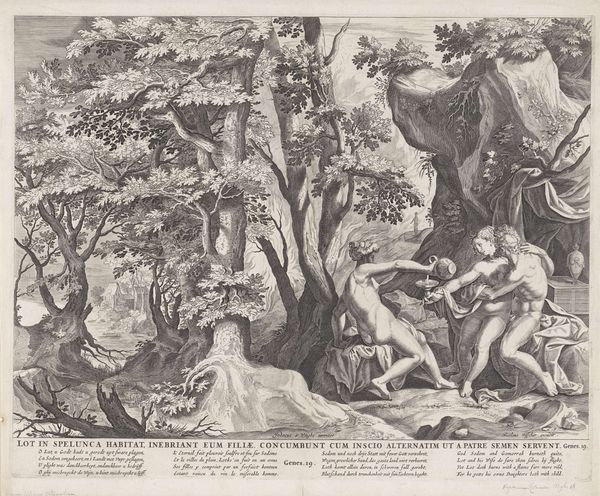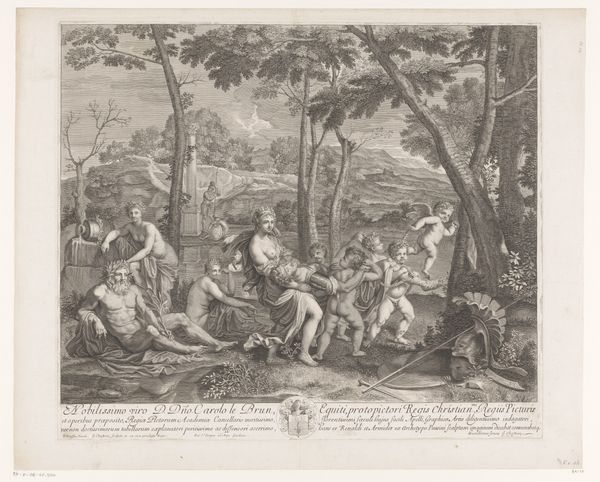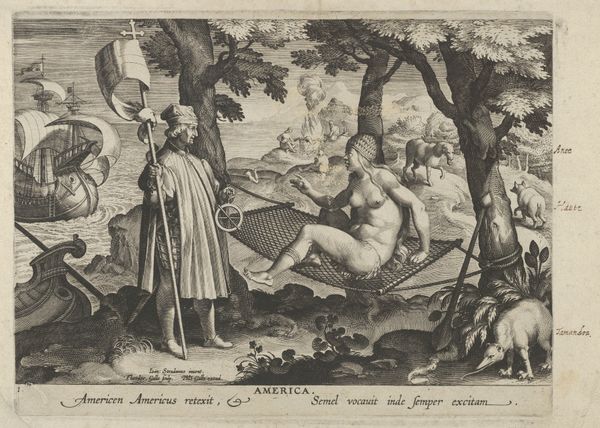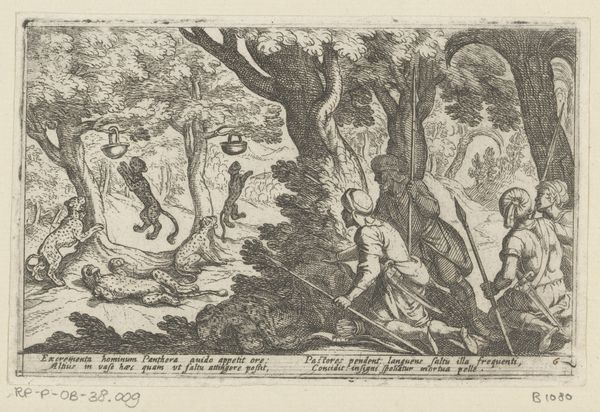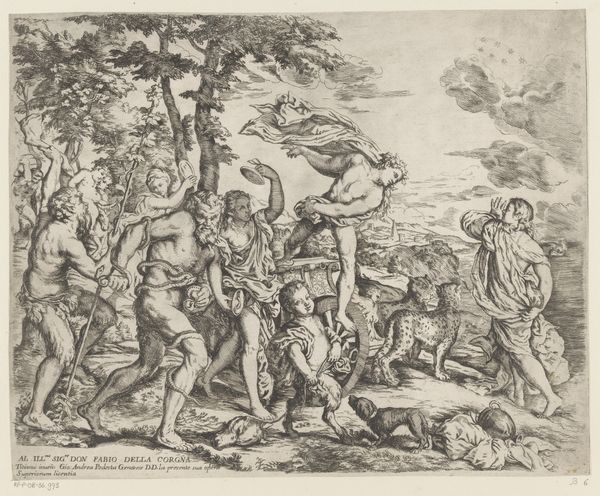
print, engraving
# print
#
pen illustration
#
pen sketch
#
pencil sketch
#
old engraving style
#
landscape
#
figuration
#
history-painting
#
northern-renaissance
#
engraving
Dimensions: height 204 mm, width 269 mm
Copyright: Rijks Museum: Open Domain
Editor: It's striking, isn’t it? The sheer density of figures under the trees creates an almost claustrophobic atmosphere. There’s something heavy and intense about it. Curator: Indeed. We are looking at "Enos en zijn nazaten," or "Enos and his Descendants," an engraving made by Johann Sadeler I in 1586. What I find immediately fascinating is the interplay between the human element and the natural environment, a relationship so clearly mediated by craft. Editor: Absolutely. All these figures look like ancient Greco-Roman philosophers and seem rooted to the spot under the tree. Are the classical figures here visual allusions to antiquity and to its relation with renaissance? Curator: It's compelling to consider. The means of producing this engraving – the deliberate marks of the burin, the textures created – everything testifies to skilled human labor shaping our understanding of this scene. The scale too: as a print, it was likely made for circulation and study rather than grand display. The northern renaissance style is full of these interesting small formats to engage in discussions. Editor: That resonates deeply with me. Enos, often seen as a bridge between the divine and human realms, is depicted amidst a pastoral setting filled with ancient wise men under old trees. Does this landscape signify a bridge between cultures and historical narratives? Curator: Yes, I believe the imagery reinforces the idea of continuity and succession – visually linking Enos and his lineage through repeated figures and classical motifs. It also speaks to how identity is formed and transmitted. The town landscape at the back of the print presents an organized civilized society from a wild pagan past represented by the wise ancient figures under the trees. Editor: Fascinating how you can see a reflection on a world and its societal structures on the materiality and forms within this print. It prompts you to meditate in what it really represents to build and inhabit these civilized lands. Curator: For me, this work underscores how prints functioned within a specific economic system. Prints are both commodity and a carrier of meaning, they serve a role in cultural production. Editor: This definitely provides a new, exciting perspective, allowing me to appreciate this print with a better understanding of the cultural forces and psychological symbols in its image.
Comments
No comments
Be the first to comment and join the conversation on the ultimate creative platform.

